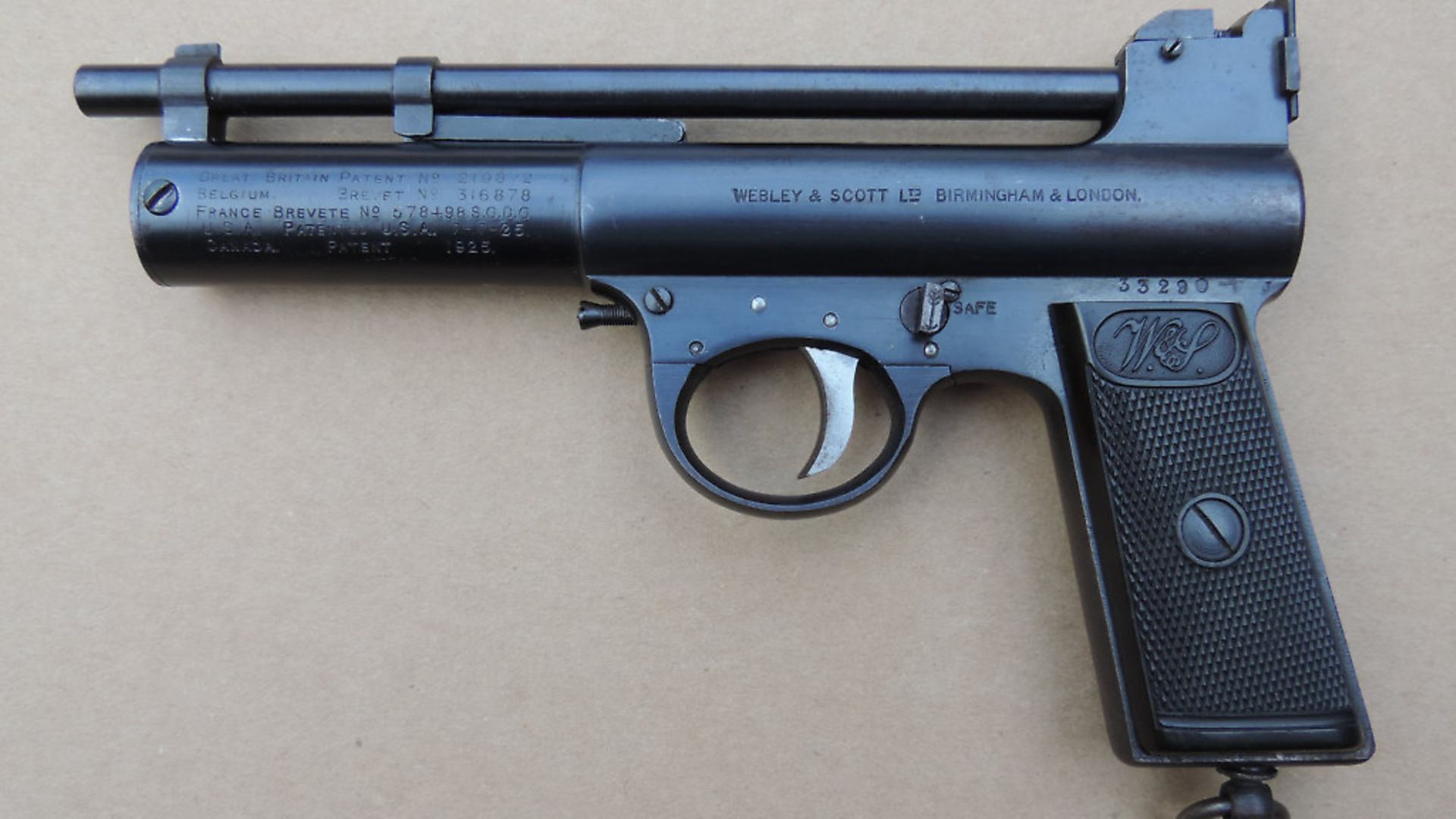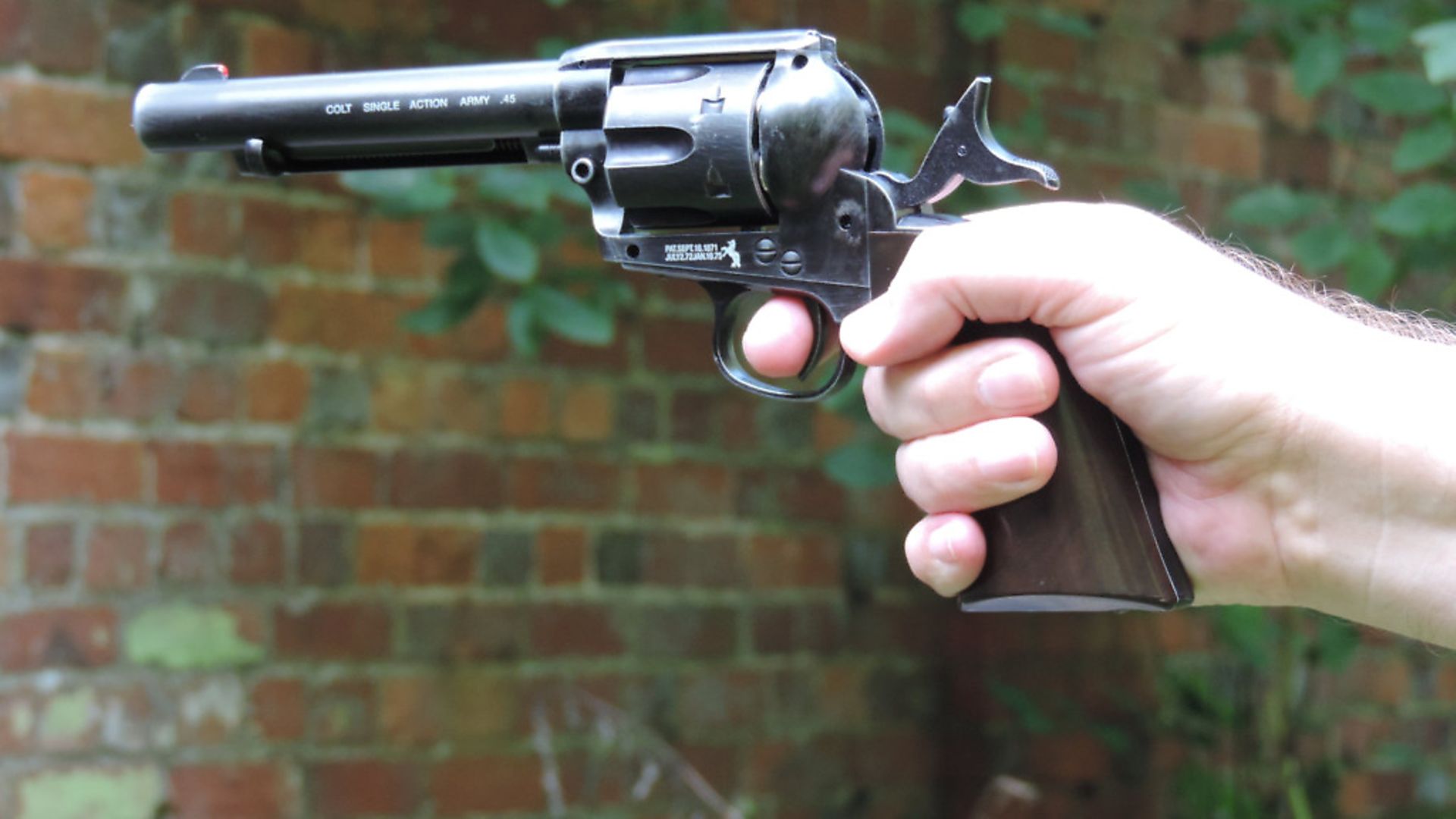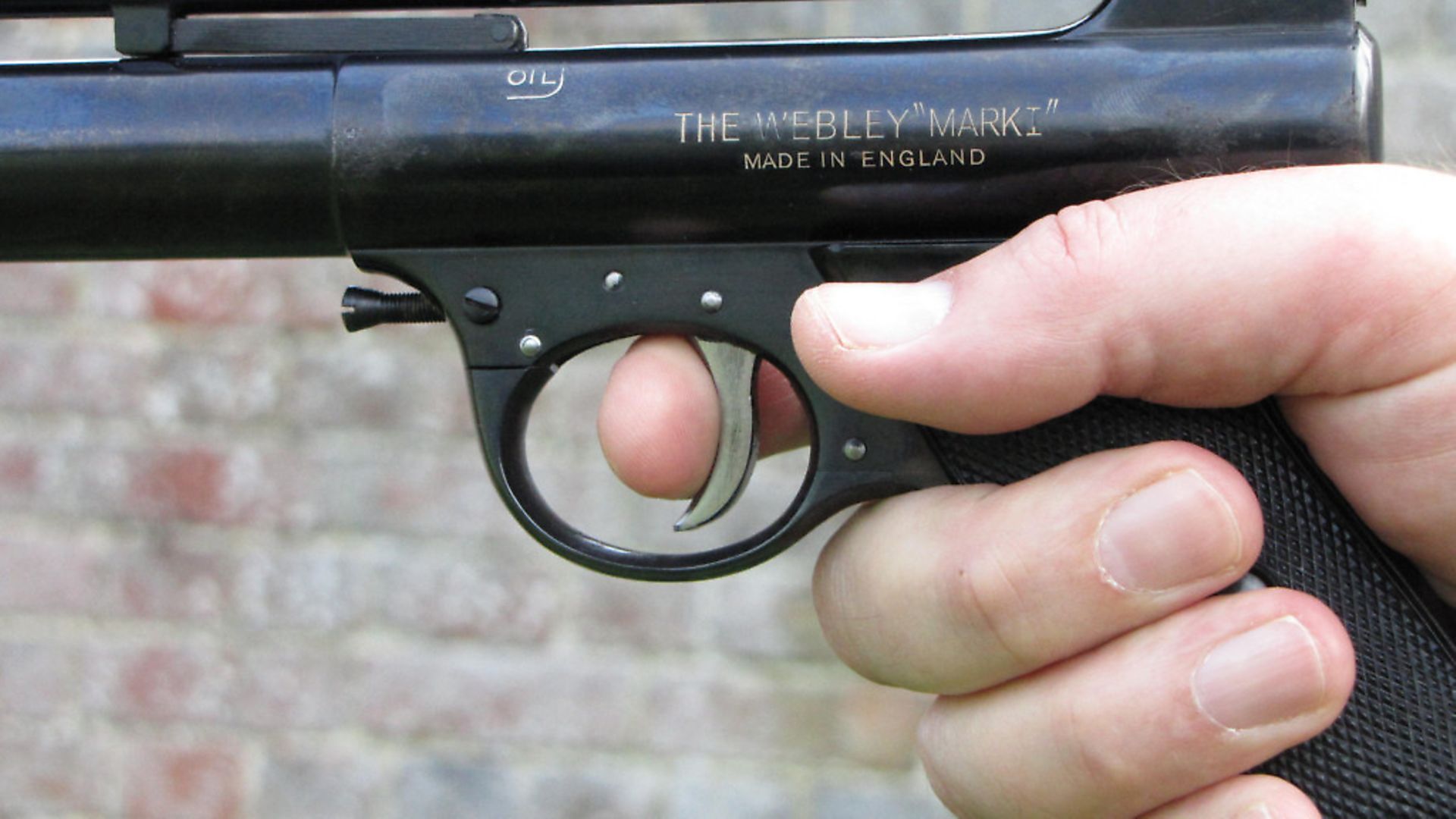This month John Milewski concentrates on the essential art of trigger release
 credit: Archant
credit: Archant
This month, we shall be concentrating on two techniques, which go hand in hand with a perfectly placed pistol shot. Actually, they are opposites and whilst one requires physical movement, the other requires the shooter to do nothing at all. We’re going to look at trigger release and the follow-through.
To recap over the last few months: We have looked at how to stand and present an air pistol to the target, so that we are as comfortable as we can be. We have sought to hold the pistol consistently, and we have looked at how best to aim the pistol. Now we come to the most important technique of all – the trigger release.
 credit: Archant
credit: Archant
Opposites attract
So far, the emphasis has been very much on concentration and reducing movement through a comfortable aim and hold. It is important to appreciate that movement of the pistol during the shot cycle cannot be eliminated completely and even a top-level match shooter will move around to some extent, albeit this will be barely discernible to we mere mortals. Releasing a trigger goes against the principle of minimising movement because by its very nature, you are moving a part of your anatomy, whilst attempting to keep everything else completely still.
 credit: Archant
credit: Archant
Breathing
Even breathing is minimised. I tend to take a deep breath as I present the pistol, and then let it out slowly. I’m not usually conscious of holding my breath deliberately because letting out that deep breath stops my body wanting to breathe in again immediately. Basically, my breathing stops as I let most of the breath out and I have up to eight seconds to release the shot. If the shot is not fired within eight seconds, I’ll come down off the aim and start again.
Triggers differ immensely between various models. Match triggers are designed to release crisply, with the minimum of effort on behalf of the shooter, and even they can be jerked inadvertently during a lapse in concentration. Standard air-pistol triggers can vary from crisp and predictable to long and creepy. If they are adjustable and you are confident in doing so, then I recommend a light, crisp release, but not so light that the release becomes unpredictable and dangerous. If they are not adjustable, you will need to adapt your technique around the trigger, which is possible with enough practice.
 credit: Archant
credit: Archant
How to release a trigger
Triggers are not pulled because ‘snatching’ will result in a wayward shot. Using the pad of the forefinger, I tend to increase pull pressure slowly until the trigger releases the sear. Some say the shot should come as a surprise, whilst others maintain that a shooter needs to know when their trigger releases. As with most shooting techniques, either option will work if you get used to it. The important thing to remember is that the release should be smooth and consistent.
The pistol will wobble when in the aim, and to minimise this some shooters will try to control that wobble by moving the pistol through a circle deliberately, and then minimise the area covered by the arc of movement. The idea is that eventually you will control your wobble, so that it stays within the black aiming mark of a 1- metre match card, and then within the centre of that card. Whilst trying to control that wobble through reduced movement, you then need to introduce the prospect of applying pressure to the trigger. My advice here is to apply pressure steadily until the shot is released. For consistency, keep the finger back and maintain contact with the trigger blade after the shot is away. Do not immediately pull away from the trigger.
 credit: Archant
credit: Archant
Do nothing
Once the shot is away, you do not need to do anything - literally. Doing nothing is probably the most neglected aspect of not just pistol, but rifle shooting too. Just like a golfer follows through on their swing, a pistol shooter must do the same after a shot is released. Allowing the pistol to recoil naturally will help you to maintain the aim and not get into the bad habit of bringing the pistol down before the pellet has left the barrel. Follow-through is the final act in successful pistol shooting and is very easy to learn, even with a recoiling pistol. I will maintain the aim and count to two after releasing a shot, so that I know I have followed through. This can be difficult with a spring pistol because you will temporarily lose the sight picture due to the recoil, but if you let the pistol recoil naturally without bringing it down, you are being consistent and will be rewarded with consistent results – I promise.
 credit: Archant
credit: Archant
I’ll finish with that simple question. You must want to hit the target to be successful. By using applied and proven pistol-shooting techniques, you WILL hit that target. Before presenting the pistol, take a moment to picture in your mind what a successful shot means to you. It might be hitting the centre of a match card, hitting a tin can at 20 yards, or splitting a playing card edge on at six yards. Just believe all of this is possible and you are capable of the shot.
Once you introduce negativity and doubt, you’ll miss before you pull the trigger. Think positively and you will hit the mark.
See all of John Milewski’s target techniques here...
The essential pistol target shooting techniques
Target techniques: The aim
Holding tips to improve shooting technique